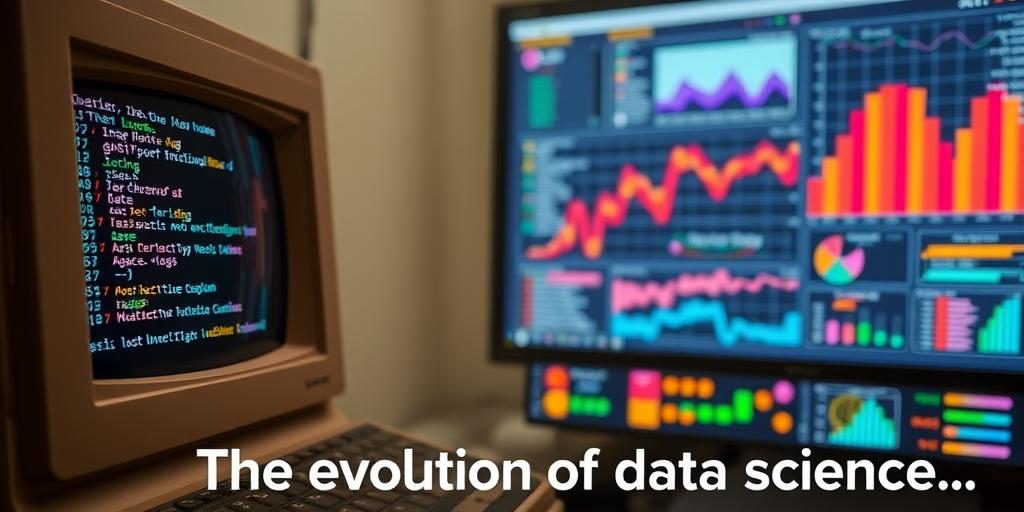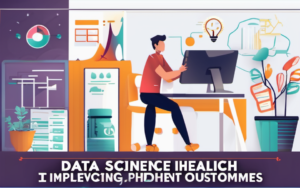In the realm of information, data science has emerged as a powerful force, transforming the way we understand and interact with the world around us. What was once a domain of numbers and calculations has evolved into a sophisticated field that leverages complex algorithms, advanced technologies, and human ingenuity to extract valuable insights from the vast ocean of data.
The Dawn of Data: When Numbers Told the Story
The journey of data science began with the humble spreadsheet, a simple tool that allowed us to organize and analyze numerical information. This early form of data analysis, while rudimentary, laid the foundation for what would become a transformative field.
From Spreadsheets to Insights: The Early Days of Data Analysis
Early pioneers in data science used basic statistical methods like averages, standard deviations, and correlation analysis to uncover patterns and relationships within datasets. These early attempts, though limited by computing power, paved the way for more sophisticated data analysis techniques.
The Rise of Statistical Modeling: Unlocking Hidden Patterns
As computing capabilities advanced, so did the complexity of data analysis. The development of statistical modeling techniques like regression analysis, ANOVA, and time series forecasting enabled researchers to explore intricate relationships and make predictions based on data patterns.
The Data Explosion: The Birth of Big Data
The advent of the internet ushered in a new era of data generation, bringing about an unprecedented surge in data volume, velocity, and variety. This “big data” phenomenon presented both opportunities and challenges, forcing researchers to adapt and develop new approaches to handle the sheer scale of information.
The Internet’s Impact: A Tsunami of Information
From social media posts and online transactions to sensor data and scientific experiments, the internet became a massive source of data, generating terabytes of information every second. This explosion of data created a need for efficient and scalable data management and processing techniques.
The Challenge of Scale: Handling Massive Datasets
The sheer volume of data generated by the internet presented a significant challenge for traditional data analysis methods. New tools and technologies, such as distributed computing frameworks like Hadoop and Apache Spark, were developed to handle the massive datasets and extract meaningful insights.
The Rise of Machine Learning: Data as a Driving Force
Machine learning emerged as a revolutionary force within data science, empowering computers to learn from data and make predictions without explicit programming. This paradigm shift enabled the creation of intelligent systems capable of analyzing vast amounts of data and uncovering complex patterns.
Algorithms that Learn: From Supervised to Unsupervised Learning
Machine learning algorithms can be categorized into supervised and unsupervised learning. Supervised learning involves training algorithms on labeled data, allowing them to predict outcomes based on new input. Unsupervised learning, on the other hand, focuses on discovering hidden patterns and structures within unlabeled data.
The Power of Prediction: Forecasting and Decision Making
Machine learning algorithms have found wide applications in various fields, enabling businesses to make accurate predictions, automate processes, and optimize operations. From fraud detection and customer segmentation to personalized recommendations and medical diagnosis, machine learning is transforming how we live and work.
The Future of Data Science: Beyond Numbers
As data science continues to evolve, we are witnessing the integration of artificial intelligence (AI) into data analysis, leading to the emergence of intelligent systems that can learn, adapt, and make decisions based on vast amounts of information.
The Integration of AI: Data-Driven Intelligence
The convergence of data science and AI is creating intelligent systems capable of understanding complex data patterns, generating creative solutions, and automating tasks that were once considered human-exclusive. This integration is paving the way for a future where data-driven decisions become increasingly prevalent.
The Ethical Considerations: Responsible Data Use
As data science becomes more powerful, it is essential to address the ethical considerations surrounding its use. Bias in data, privacy concerns, and the potential for misuse require careful attention to ensure that data science is used responsibly for the benefit of society.
The Human Element: Data Science for Good
The future of data science holds immense potential for addressing global challenges and creating a more equitable and sustainable world. By leveraging data to understand social problems, develop innovative solutions, and improve decision-making processes, we can harness the power of data for good.
The landscape of data science is constantly evolving, driven by technological advancements, increasing data volumes, and the growing need for insights. As we continue to explore the vast potential of data, we are shaping a future where data science becomes an integral part of our lives, driving innovation, empowering decision-making, and ultimately shaping a better world.




